On October 11, 1814, the town of Riverhead, on Long Island, erupted with the sound of cannon fire. Iron balls whistled over the cliffs on the north of the island, as the townsfolk found themselves subject to a bombardment.
However, they were not the target. A Revenue Cutter, the Eagle, was beached just north of the town, and its crew was desperately trying to fend off an attack by the British ship the Dispatch.
The Cutter’s journey had started the day before, when her captain, Frederick Lee, received reports that British ships had been harassing American merchants in Long Island Sound.
His ship, the US Revenue Cutter Eagle, was minuscule in comparison to the enemy ships reported in the area. The Eagle carried a crew of only 25 men. She had four 4-pounder cannons, and two, 2 pounders. She went out in search of HMS Pomone, a frigate armed with 44 guns, and a crew of over 300. Lee knew he could never defeat the ship in a one on one fight, but he might be able to board and recapture some of her prizes.
The Eagle set sail out of New Haven, Connecticut but immediately ran into trouble. The wind died, a bad omen to any sailor, and, more practically, it meant a loss of power and movement. Undaunted, Lee had his ship towed by rowboat into the bay, where her sails filled with the wind again, and she was on her way.
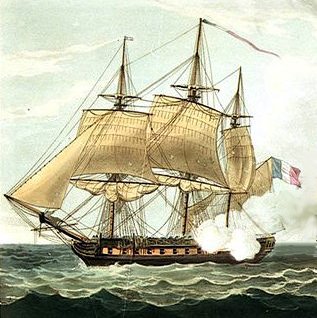
At about 0530 the next morning, coming out of a thick fog the Eagle saw the Susan, which had been taken as a prize by the Pomone. However, she was not alone. Escorting her back to British waters was the 18 gun brig Dispatch and a tender from the Pomone. It was too late to escape; Lee knew he had to act quickly.
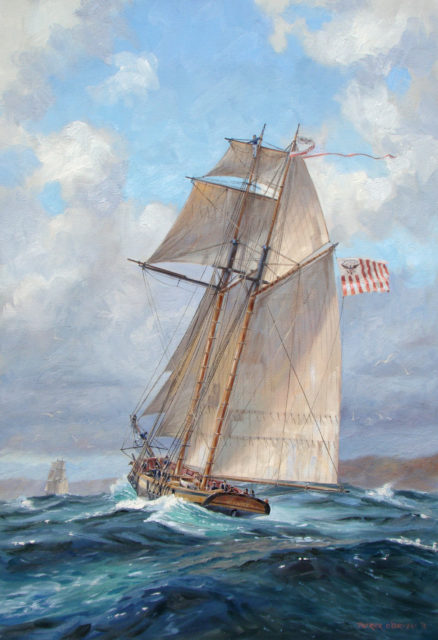
The Cutter burst into action. The crew launched a small boat, hitched a line to the Eagle and started rowing for dear life. The wind had died again, and the men knew their lives were in extreme danger if they waited for it to come back. As they rowed, they watched in horror as the
As they rowed, they watched in horror as the Dispatch’s crew did the same, sending barges full of sailors armed to the teeth after them. The Eagle began firing on the British boarding parties in an attempt to deter them. However, they did not relent. Lee decided their only hope was to beach the ship and fight on land.
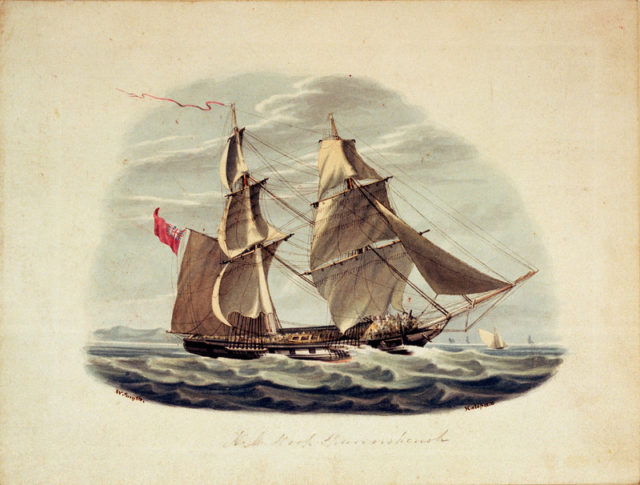
At a small bluff with a sandy beach, he grounded the Eagle. His crew rushed supplies, guns, and ammunition up the hill. They were joined by militiamen and volunteers from the local town, alerted by the gunfire. When they had finished, Lee had two 4-pounder cannons and two 2-pounders high up on the bluff. They raised the American flag and stood defiantly. They were determined not to give up their ship without a fight.
Musket and cannon fire echoed around the sound, coming from both sides. The British boarding parties again tried to reach the Eagle. Each time they approached, gunfire from the bluff and musket fire from the crew who had stayed on the ship drove them back.
As the British boats retreated, the Dispatch approached and anchored parallel to the shore. She let out a roaring broadside, filling the air around her with smoke, and sending a wave of iron towards the beached cutter. Lee ordered his men to return fire, and the four American guns answered as best they could.
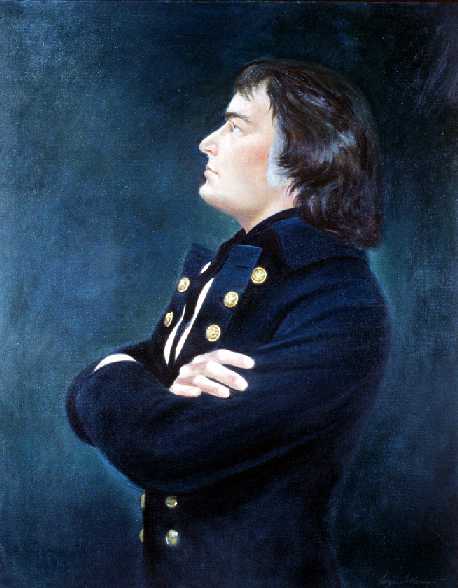
While the American guns held the British off, a party of sailors, retrieving ammunition from the Eagle, raised the Revenue Cutter’s ensign. The small act of defiance was met with a broadside from the Dispatch. The flag was shot down, but again, a sailor sent it aloft. It happened three times, and each time the sailor was cheered vigorously by his comrades on the hill. Despite the odds, not a single cutter-man was willing to give up their ship.
After several hours the British ship retreated to a safe distance. The Dispatch’s captain knew the Eagle was not going to go anywhere. He would return with reinforcements to take the little cutter.
In the lull, Lee managed to patch and refloat the Eagle, hoping to make a hasty escape before the British could return.
As dawn broke the next day, Lee’s heart sank. In the bay in front of him stood not one, but two British men of war. The Dispatch had been joined by HMS Narcissus, a 32 gun frigate as well as a small tender from HMS Pomone. To make matters worse, many of the militiamen who had joined in the fight had returned home to tend to their cattle and farms, believing the battle over. The Eagle was again beached, and the Americans retreated to their small redoubt on top of the hill.
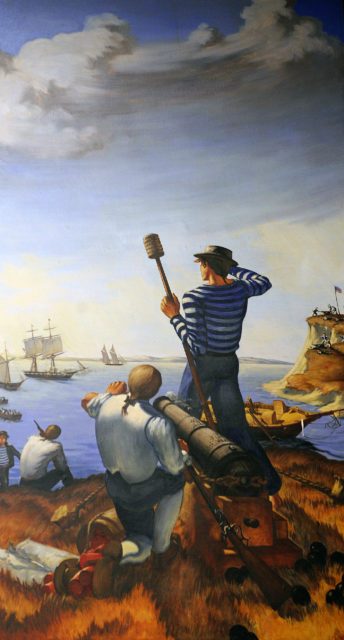
The British ships lowered seven barges, full of troops. Under a heavy supporting barrage from the three Royal Navy ships, the red-coated Marines and well-armed sailors rowed towards the beleaguered Americans with deadly intent.
The Eagle’s crew had loaded their cannons with grape shot, ball, and anything else they could use to cause damage or injury. There were stories claiming that when the Americans ran out of wadding for their guns, they tore up the ship’s logbook, and wrapped their rounds in the paper.
Just before the British boats reached the shore, the American guns roared to life. A deadly rain of iron and lead flew down from the heights, tearing into the boats and landing party. It held off the first wave, but a few British sailors were able to hook a line to the small cutter. As the tide came in, she floated, and the British ships were able to pull her off the shore. The Americans continued firing, but soon their opponents were out of range of their guns.
There were only three casualties; one American, one British, and one sheep belonging to a local farmer. Lee’s crew lived to fight another day. They found passage on a schooner, which took them across the bay, back to New Haven. Many of them continued to serve in the Revenue Cutter Service, or United States Navy.
The small, perhaps insignificant, event during the War of 1812 provides an example of the kind of ingenuity it took for American ships to survive against the Royal Navy. They were always outgunned and outnumbered. Whether it was building a superior frigate, or defending a ship from the shore, American sailors and shipwrights had to learn to outmaneuver their opponents.
Although the Eagle was eventually captured, the fact that a six gun cutter defended itself for three days against an 18 gun brig, and later a 32 gun frigate is noteworthy.
